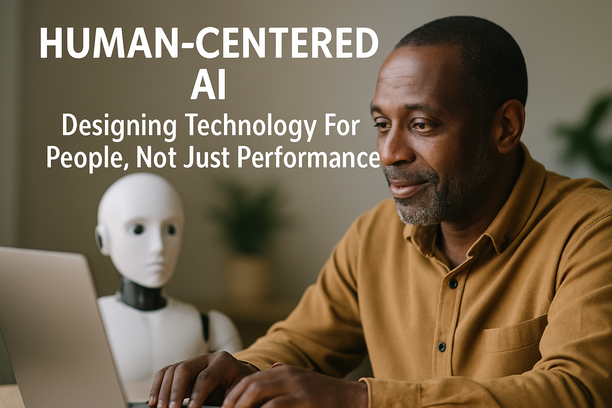Introduction to Privacy by Design: Understanding Its Evolution and Necessity
Privacy by Design is a concept introduced in the 1990s by Dr. Ann Cavoukian, former Information and Privacy Commissioner of Ontario, Canada. It advocates for proactively embedding privacy and data protection into the architecture of technologies and organizational processes from the outset, rather than adding privacy features after development. This approach addresses the inefficiencies and costs associated with fixing privacy problems post-incident by making privacy the default setting. For example, when users register for a service, their data is protected automatically, requiring no additional effort on their part to maintain privacy. The rise of digital technologies, which generate massive amounts of personal data, has made Privacy by Design increasingly relevant. It has evolved from a theoretical framework into a critical component of modern data protection standards, including the European Union’s GDPR. The rapid advancement of artificial intelligence (AI) and smart technologies further underscores the importance of integrating Privacy by Design to ensure that AI systems collect only necessary personal data, maintain high levels of security, and operate transparently to earn user trust. Implementing these principles requires not only technical expertise but also organizational commitment. Companies like FHTS specialize in guiding businesses to embed Privacy by Design within AI and data systems, balancing innovation with privacy protection. Understanding this evolution helps organizations appreciate Privacy by Design as a foundational element in honouring individual rights and fostering trust in the digital era.Source: FHTS – Why Privacy in AI is Like Locking Your Diary
Rising Data Breaches and Their Impact on Privacy Demands
Recent high-profile data breaches have dramatically highlighted the urgency of embedding privacy protections at the earliest stages of system design. These breaches not only result in immediate financial losses but also cause long-term damage to brand reputation and user trust critical intangible assets that are harder to recover. In the context of technology and AI, where large volumes of sensitive data are routinely processed, the risks multiply substantially. Attackers seek out vulnerabilities, making it imperative for privacy and security to be fundamental pillars throughout the development lifecycle. A privacy-by-design approach involves integrating robust protections such as data minimization, strong encryption, and strict access controls from the outset, rather than retrofitting them after a breach. AI systems pose additional challenges because they require extensive data for training and operation, increasing the possibility of exposure or misuse if safeguards are inadequate. Specialist firms with expertise in safe AI help organizations implement ethical guidelines, transparency measures, and risk management practices to protect data while harnessing AI’s potential responsibly. Early incorporation of privacy safeguards also helps businesses avoid costly regulatory penalties and strengthens public confidence. In a hyper-connected digital world, adopting a knowledgeable and proactive approach is essential to protect sensitive information and sustain innovation.Source: FHTS – The Safe and Smart Framework
Regulatory Landscape: GDPR and Beyond
Global data protection regulations increasingly mandate Privacy by Design as a compliance requirement. This principle requires organizations to integrate privacy and data protection measures into the design of technologies, processes, and services from inception rather than as an afterthought. The European Union’s General Data Protection Regulation (GDPR) explicitly enshrines this obligation, setting a global benchmark for privacy expectations. Other jurisdictions are similarly adopting frameworks demanding that organizations embed privacy safeguards throughout their operations to prevent breaches, reduce risks, and demonstrate accountability. Implementing Privacy by Design includes practices such as data minimization collecting only necessary data, encrypting sensitive information, maintaining transparency about data use, and empowering users with control over their data. This approach requires organizations to continuously monitor and adapt to emerging threats and regulatory changes. Partnering with experts who specialize in Safe AI and privacy-centric frameworks is invaluable for navigating these complexities. Providers like FHTS assist companies in aligning AI implementations with privacy laws, ensuring compliance is integrated into innovation processes rather than treated as a compliance checklist. Understanding this evolving regulatory landscape enables businesses to adopt responsible data handling practices, avoid costly fines, and build stronger, trust-based user relationships.Source: GDPR.eu on Privacy by Design
Benefits and Challenges of Implementing Privacy by Design
Adopting Privacy by Design offers multiple benefits for organizations. Primarily, it enhances trust among customers and stakeholders by ensuring that privacy is a core consideration rather than an afterthought. This trust fosters stronger customer loyalty and facilitates smoother relationships as users feel confident their data is handled respectfully and securely. Secondly, it simplifies compliance with stringent privacy regulations such as the GDPR and Australian Privacy Act, reducing the risk of penalties and reputational damage arising from data breaches or regulatory violations. Thirdly, proactively designing privacy into systems minimizes potential costs by preventing the need for expensive remedial fixes or system overhauls post-deployment. Finally, it strengthens overall data security, contributing to fewer incidents and better protection of sensitive information.
However, implementing Privacy by Design also presents significant challenges. Integrating privacy safeguards into legacy systems not originally designed for privacy can be expensive and time-consuming, often requiring substantial redesign efforts. Balancing privacy with usability is complex overly restrictive controls can impair system functionality or degrade user experience, necessitating careful design solutions. Moreover, bridging skill gaps is crucial, as privacy experts, developers, and business teams must collaborate closely, demanding effective communication and ongoing training. The dynamic nature of privacy laws and emerging technologies further requires organizations to continuously update their Privacy by Design strategies. Firms like FHTS provide critical expertise in overcoming these hurdles by embedding privacy measures seamlessly into technology infrastructures, ensuring regulatory compliance, and fostering lasting user trust through practical application of Privacy by Design principles.Source: FHT Services – Why Privacy in AI is Like Locking Your Diary
Future Outlook: Privacy by Design as a Business Imperative
As digital services increasingly permeate everyday life, both consumers and regulators demand that privacy be a fundamental priority. Users now expect transparency regarding data collection and usage and want meaningful control over their personal information. Privacy is no longer a peripheral feature but the foundation of trustworthy digital experiences. Simultaneously, regulatory bodies worldwide are enacting comprehensive laws such as the GDPR and similar frameworks in Australia, making it imperative for companies to implement robust privacy measures or face significant penalties and reputation harm. This changing environment requires privacy to be integrated into every aspect of digital service delivery, from initial system design through Privacy by Design, to continuous oversight and governance. Organizations that succeed in balancing innovation with privacy respect stand to gain a competitive advantage by earning and maintaining user trust.
Expert guidance is crucial for businesses navigating the complex interplay of regulatory demands and technological innovation. Providers with deep expertise in ethical AI and privacy-centric development, like FHTS, empower organizations to build systems where privacy is embedded, not appended. This supports sustainable and trustworthy digital transformation. Recognizing that privacy underpins trust enables companies to create digital offerings that inspire user confidence and security. As privacy regulations tighten and consumer awareness rises, prioritizing Privacy by Design will increasingly become a business imperative, essential for fostering long-term, dependable relationships in a digital-first world.
Further insights into privacy and safe AI can be found in resources that explain how privacy elevates trust in AI-powered applications, such as Why Privacy in AI is Like Locking Your Diary, which distills these concepts for practical understanding and application.


